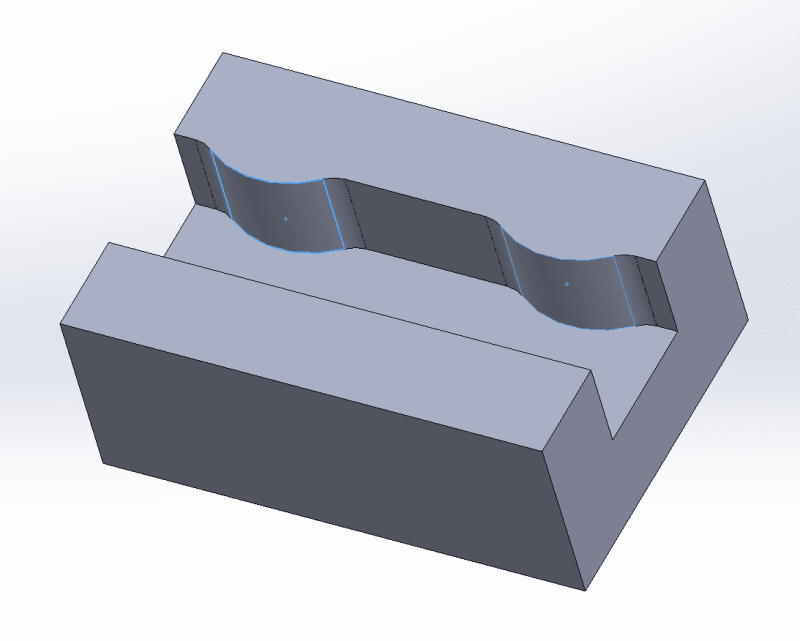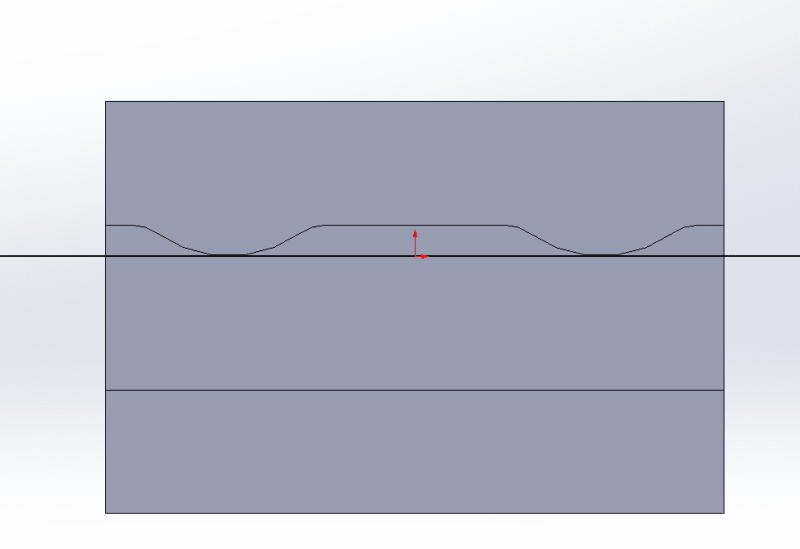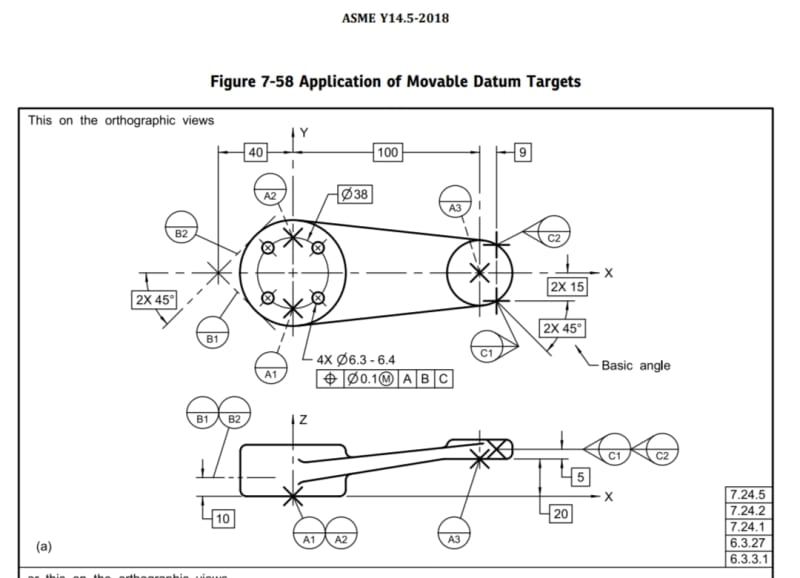It contacts two places, so is it B1-B2? It's not necessary as other examples in the standard show.
Who was it who added the "datum target plane" verbiage to the 2018 standard?
Same person who failed to add it to Section 3, DEFINITIONS and also failed to add it to the NONMANDATORY APPENDIX A PRINCIPAL CHANGES AND IMPROVEMENTS?
A-5.1 Edited Definitions
The following definitions were edited for added clarity and without intent of change to the meaning: angularity; boundary, least material (LMB); datum target; feature; free state; irregular feature of size; and runout.
A-5.2 Added Definitions
The following definitions were added: continuous feature, continuous feature of size, interruption, represented line element, restrained, and true geometric counterpart.
A-9.12 Datum Target Requirements and CAD
Application of datum target dimensional requirements and accommodation of CAD capabilities have been added in para. 7.24.3.
Here's the edited definition:
3.21 DATUM TARGET
datum target: the designated points, lines, or areas that are used in establishing a datum.
See what is clearly missing?
No figure for Datum Target Plane:
6-8 Datum Target Point
6-9 Datum Target Line
6-10 Datum Target Area
Further, everwhere else in the standard reflects this: 7.24.4 Datum Planes Established by Datum Targets, not "datum target planes are established."
No wonder Burunduk is so hot and bothered. Probably wants to show off a new toy from his hundreds of hours of pouring over the standard going line by line and word by word. However, he wants to establish the mutually tangent plane to create datum target lines to create a datum plane that is a mutually tangent plane.
However, it is not required and doesn't match the OP case.
Since it is missing from all other places in the standard I take it as nothing more than a typographical error or an unauthorized change made without committee review.
Once again:
Conshisltency ithn't thair shtrong shoot. (in the voice of Mel Blank performing Daffy Duck.)





